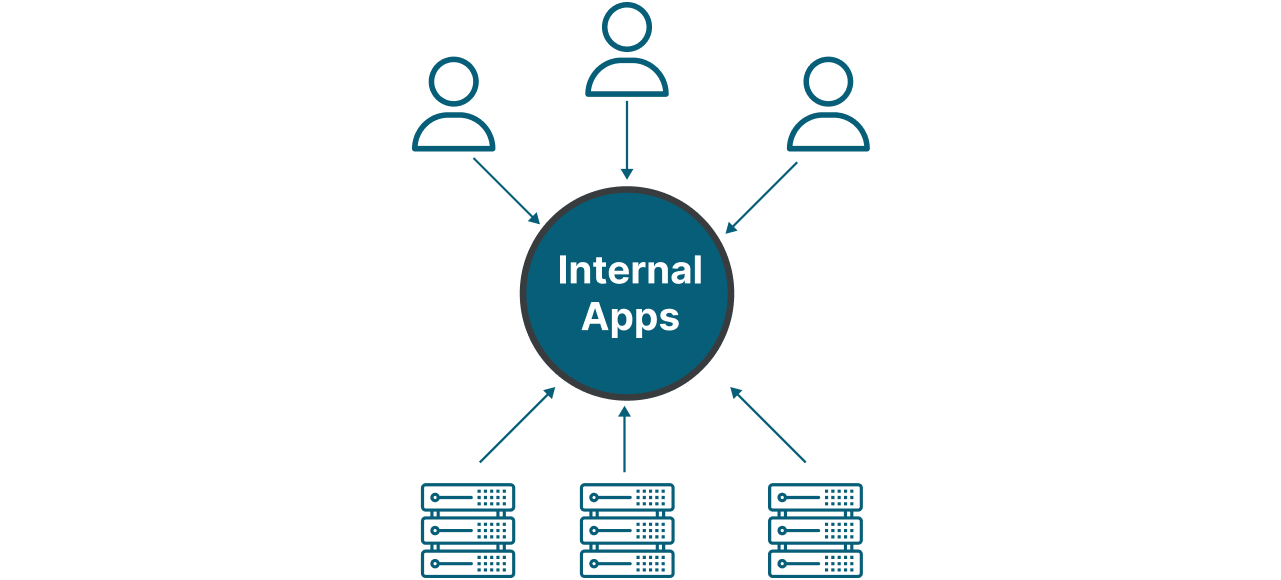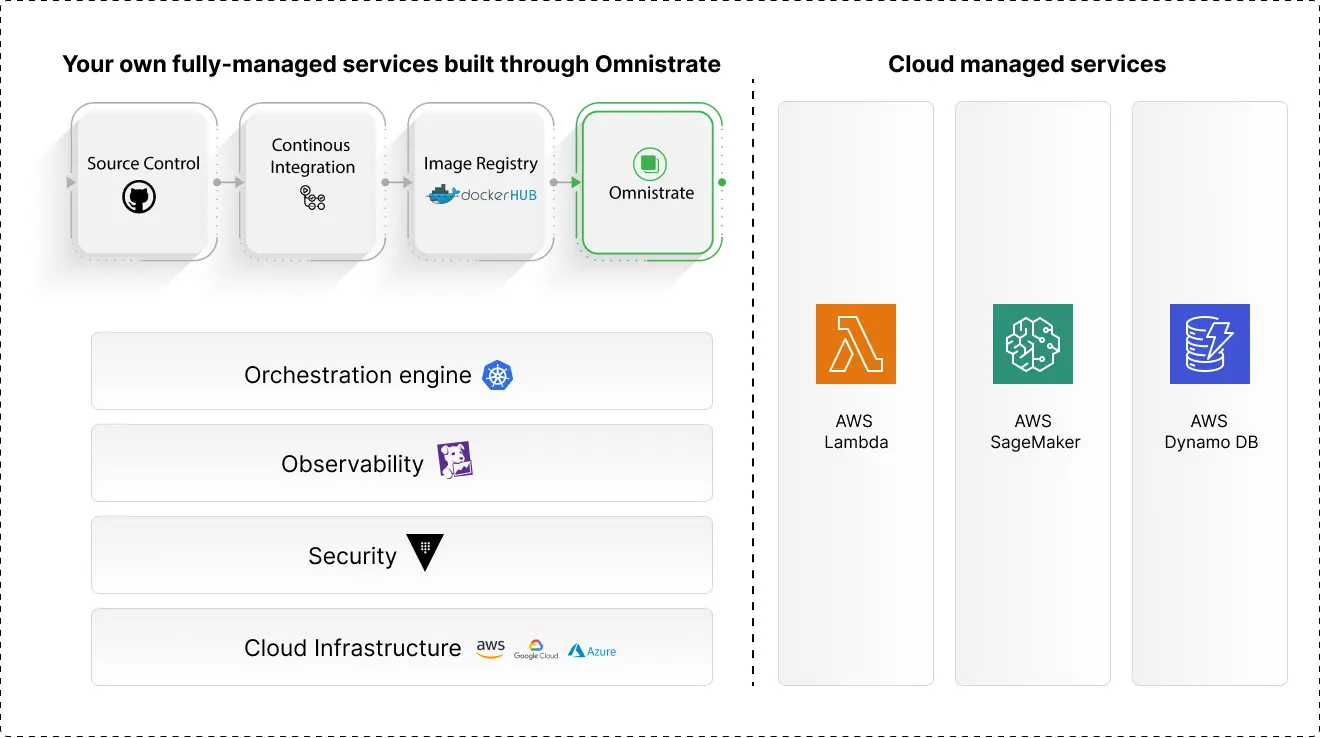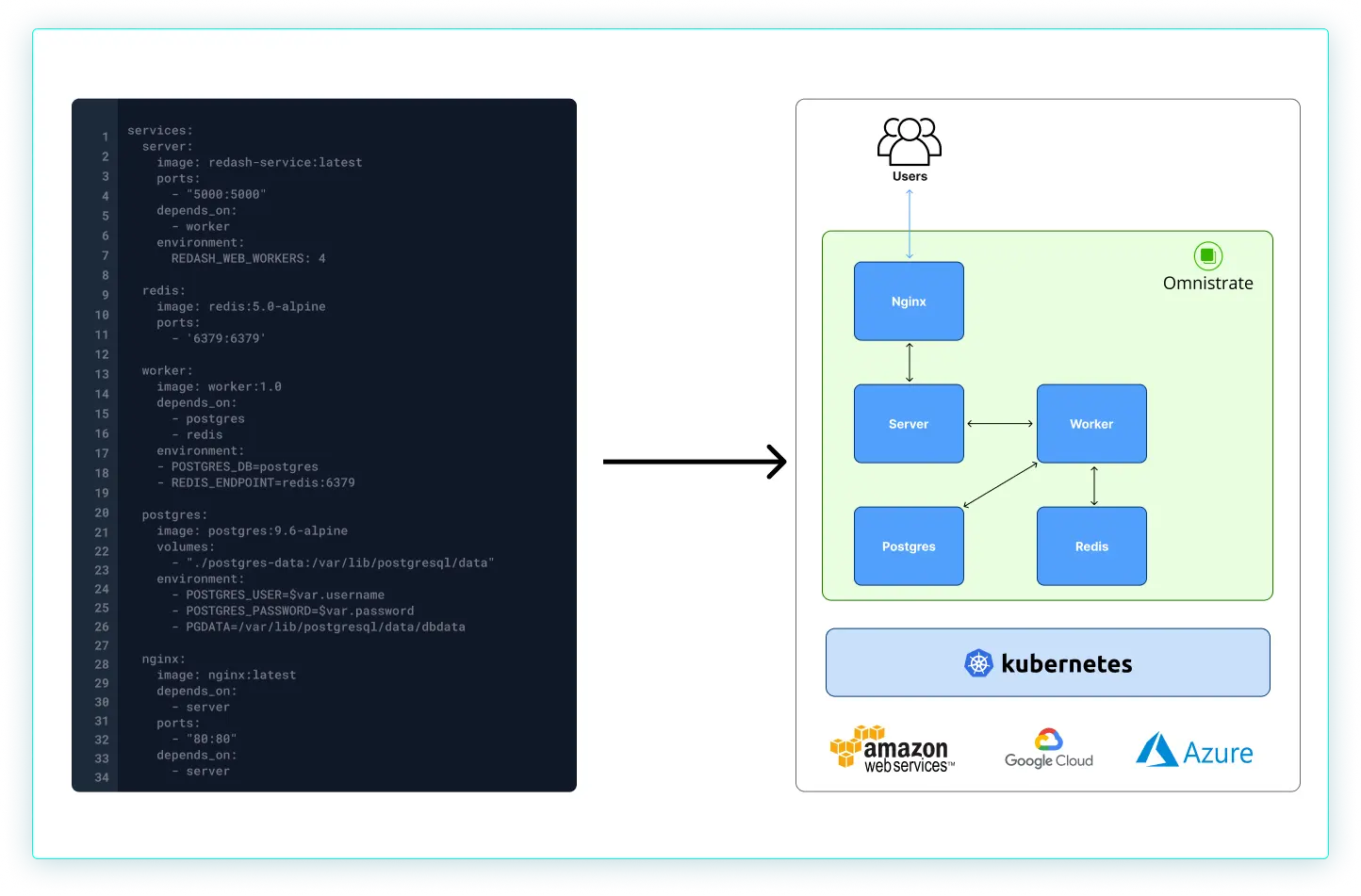Internal SaaS / PaaS¶
Internal SaaS refers to a model where software applications are hosted, and maintained by an organization for its own use or for a specific group of users.
On the one side is the Platform or IT teams offering those applications running on your servers, and on the other side are the users in rest of the organization. Here is how it may look like:
Internal SaaS / PaaS benefits¶
Omnistrate enables platform or IT teams to build your Internal SaaS to streamline hosting and management of internal applications to rest of the organization so that teams can focus on things that matters the most for your business from defining policies to exploring new technologies to helping applications teams with their deployment or operational or infrastructure designs.
Secondly, standardizing the tooling will enable you to quickly offer a new application to the organization in no time. It will allow you to run experiements, adopt new technologies, deprecate old ones without much overhead.
Thirdly, standardizing will streamline the processes and further reduce the cost to operate beyond all the automation offered by the internal saas design.
It will allow you to unify policies across the teams, track costs across the teams, rollout security patches quickly, isolate different teams tech-stack as needed, apply operational improvements in one place.
Finally, it improves the user-experience as it brings consistency for your users, makes it easy for them to onboard a new team member without having to learn hundreds of different ways to operate.
Internal SaaS / PaaS features¶
Here are some of the things that your Internal SaaS can help:
- Create service templates to enable self-service deployments. Here are some example use-cases:
- Deploy across accounts: as you scale, you may want to go across multiple accounts for DR reasons and quota limitations
- Go multi-cloud: you may want to keep the flexibility to go across clouds for price negotiation and DR reasons
- Go Global: you may want to go global and have requirements like GDPR to keep the data local
- Deploy across environments: you may want to have dev, staging and prod environments and keep them in sync
- Enable on-demand customization: you may have different configurations in which you want to test your stack
- Create self-service portals and empower your application teams to innovate faster
- Ability to auto-pause and auto-scale your workloads
- Auto-tag your stacks to gain visibility into costs
- Ability to update the software for tenants or isolate different tenants
- Multi account management and consolidation
- Automate day-2 operations from rotating certificates, in-depth observability, upgrading infrastructure, to recovering from different failure scenarios
- Automated infrastructure management
- Simplify your cloud migration
Omnistrate also integrates with your favorite tooling and you can integrate it further with other tools of your choice. You can read more about the supported integrations here
Reference architecture for Internal SaaS / PaaS¶
Here is a reference architecture that your Internal SaaS might look like:
Internal SaaS / PaaS example¶
One of our customers have an Nginx based application with Redis and PostgreSQL components. To keep things simple, we will a server microservice with workers to distribute the work.
They wanted to create different stacks in every region for isolation and compliance, have different testing environments and keep it in-sync with the production environment, different configuration to test with different settings. They were able to model their application stack to create a Internal SaaS Product and power their application teams.




